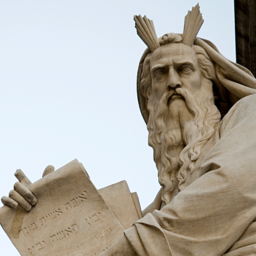The Ten Commandments are central to both Judaism and Christianity. Whilst there is consensus as to where the First Commandment begins and the Tenth Commandment ends, there are differing ways to seperate and number them.
In Hebrew the Ten Commandments are known as the Ten Words, or the Ten Statements. Since the Commandments were originally given in Hebrew we will use the Hebrew method for separating them and begin with the First Statement:
“I am the LORD your God, who brought you out of the land of Egypt, out of the house of slavery.”
We do not normally think of this First Statement as a command since it does not contain a “thou shalt not”. However, this First Statement is the ultimate reality. It is the one which holds the entire code together.
The First Statement is comprised of two parts:
- Firstly, “I am the LORD your God,” and
- Secondly, “who brought you out of the land of Egypt, out of the house of slavery.”
I am going to address both of these parts in this episode of Caleb’s Journal.
Ten laws or one?
In Hebrew thought the first point made is also often the conclusion. This means that all Ten Statements are summed up in this First Statement.
The Ten Statements should not be seen as ten seperate laws, each standing on their own. Rather they should be viewed as ten connected realities that all find expression in the First Statement.
Biblical Hebrew has no numerals. Instead the letters of the alphabet are used to express numbers and to index lists of items.
The First Statement is represented by the first letter of the Hebrew alphabet, the aleph.
Hebrew is a pictographic language – whereby each letter carries a meaning which is expressed in its shape.
Aleph, as the first letter represents “what is first”. As a pictograph it symbolises an ox, or strength. When we put these concepts together we see that the aleph represents strength, that which is first, a leader.
So in the first part of the First Statement we hear a very clear reality:
“I am the Lord your God,…”
He is the first, He is the strong one, He is the leader.
This is affirmed in the opening verse of the Shema:
“Hear, O Israel: the LORD our God, the LORD is one.”
Having one God, Israel has one law – as opposed to many gods and many laws.
A blueprint for relating to God
As all the Ten Statements can be summed up in the First Statement, it follows that the following nine Statements show us how to give expression to the First Statement, the first reality – that the LORD is God.
In this sense we can say that the Ten Statements are a blueprint showing us how to relate to God.
Why did God give Israel the Ten Statements?
Why did God give us the Ten Statements?
The answer to this question is contained within the second half of the First Statement:
“…who brought you out of the land of Egypt, out of the house of slavery.”
The purpose of the law is freedom. The Ten Statements are God’s solution for our enslavement to sin and societal breakdown.
But how does the law give us freedom?
The Promised Land and God’s Presence
Just as God delivered the ancient Israelites from their slavery to Egypt, so Jesus Christ has delivered us from our slavery to sin.
For the ancient Israelites possession of the Promised Land was dependent upon them remaining faithful to the Law of God.
For us today entering into our Promised Land is synonymous with entering into the presence of the Almighty God Himself.
As fallen man we fear to enter into the presence of our Almighty God. However through our believing obedience that Jesus is both our Saviour and our King, this fear is removed and we are able to enter into His presence.
This believing obedience works in us, giving us the power to express His Word, to comport our lives in accordance with His Law. The result of which is the manifestation of the presence of God within us, by which we are able to fulfil our destiny as Israelites – to exercise His righteousness and justice, and thereby be a blessing to the nations of the world and fulfilling the purpose of the law itself – to manifest freedom, and releasing creation from slavery.
All of this is contained within the very First Statement:
“I am the LORD your God, who brought you out of the land of Egypt, out of the house of slavery.”


